Fungus
After driving to Upper Colwall to deliver a vase for a photo shoot at Haslington House for the Chuffed Store‘s Christmas catalogue (well it is November), and after gazing down at the counties of Herefordshire on the West and Gloucestershire on the East side of the hill, I was inspired and needed a walk.
A damp and overcast day for a walk in the Frith Wood, but this time in the company of son and daughter-in-law, which shifts the dynamics from the usual meandering inattention of two eyes to the more stimulated and observant six, focussing on all things mycological. Both are keen fungus foragers and they know how and where to look, pointing out all sorts of strange little outgrowths along a track I had only been along two days ago without spotting anything unfamiliar. Even before entering the wood at the top of Bradlow Hill , in the sloping meadow just a few feet from Chris Johnson’s bench, they noticed a large Parasol mushroom.
WARNING. Dear reader, one way of minimising the risk of poisoning by Parasol-like mushrooms is to steer clear of any specimens with caps smaller than 10cm across when fully expanded, so avoid small specimens. The other, better, way to reduce to zero the risk of harm is to not take any of this blog as trustworthy – remember that I am a ceramicist and I know as much about mycology as a fish does about bicycle gears. Which reminds me that this is meant to be a ceramics blog and I don’t know how I’m going to link mushrooms to pottery.
Anyway, keep in mind that all fungi deteriorate in flavour and texture as they age (don’t we all). This Parasol was obviously way past its sell-by date, so we didn’t take it home. Experts recommend gathering Parasols at the ‘partly expanded umbrella’ stages of development before putting them in a pan and frying them in butter. Keep the stems chopped up for mushroom soup.
Just behind the C.J.’s bench was a cluster of Stump Puffballs. Must be eaten while the flesh is white throughout (they can be fried with onions or used to make soup) and its best to leave “mature” ones alone, once they have a darker or brown surface, they are inedible. However, even when young, the tough outer skin needs to be removed – a fiddly job – and if any are turning yellow it means they are maturing and should be chucked out. At the end of the cooking session you may want to throw them all out and nip down to Tesco for a bag of button mushrooms.
Once into the Frith and its murky light, some of the fungus we came across are quite ugly, others bizarre, but they play an important role within our ecosystems, helping to recycle nutrients from dead or decaying organic matter, and providing food and shelter for different animals. A pile of old logs in your garden will encourage fungi and the wildlife that depends on them. Some are strangely beautiful in their own right, and the Wood Blewitt is one, the Blood Red Web Cap another, the Rosy Bonnet, the Amethyst Deceiver… by the way, the images of mushrooms and fungi held to the camera by a hand with red painted nails, that’s my daughter-in-law’s and not my son’s.
In many parts of mainland Europe, Wood Blewits are available in supermarkets throughout most of the autumn and winter months, and they are particularly popular in France, Spain and Portugal. Young caps are best, and they have the added advantage of retaining their bluish colouring as an aid to identification. They are very good if sauteed and served with veal, pork or chicken; they are also fine with cheese, rice and pasta dishes.
What about the Yellow Brain or Witch’s butter? According to European legend, if Yellow Brain fungus appeared on the gate or door of a house it meant that a witch had cast a spell on the family living there. The only way the spell could be removed was by piercing the fungus several times with straight pins until it went away.
The Honey Fungus can be a destructive forest microorganism since it causes “white rot” root disease. It also feeds on dead plant material, allowing it to kill its host, unlike parasites that moderate their own growth to avoid host death – so they are bad news if they appear in your garden. In parts of Europe it is highly prized and ranked above Morels and Chanterelles for their distinctive “mushroomy” and nutty flavour. On the other hand, the largest known organism in the world is a Honey Fungus that spans over 8.9km2 in Oregon. It is estimated to be 2400 years old. Yes, the largest living thing on Earth is a humongous fungus.
The Polypore fungus is one of the good guys. It is an indicator species of healthy natural forests, and Ötzi the Iceman, who lived between 3400 and 3100 BCE and was found in the Similaun mountains of Austria in 1991, was carrying a polypore species, probably for medicinal use.
We came across the inedible King Alfred’s Cake, or Cramp Ball, or Carbon Ball, which it resembles. I expect you all know the legend of King Alfred (b 871) who once hid out in a countryside cottage during a battle and was put in charge of removing cakes from the oven when they were done. He fell asleep and the cakes burned and when the old lady of the house returned, she beat him with her broom. The fungus is said to resemble a charred cake. The fungus is a useful form of tinder for fire-lighting. you can drop a spark on to the inside surface and if you are successful you will see a small orange glow begin to form and spread throughout the fungus, similar to a charcoal briquette.
Underneath the spreading chestnut tree
I loved him and he loved me
There I used to sit upon his knee
‘Neath the spreading chestnut tree…..
There beneath the boughs make no mistake
Good Queen Bess play darts with Drake
Watching Alfred burn the birthday cakes
‘Neath the spreading chestnut tree.
(click here to hear Glenn Miller’s famous version)
A significant percentage of the trees in the Frith is chestnut. The ground in the wood is littered with fallen chestnuts and opened burrs, many already nibbled by that nemesis of all saplings, the grey squirrel, who strip bark from them when the tree is about eight years old and onwards. It might be the vitamin C they’re after to set them up for winter since the chestnut is the only “nut” that contains that vitamin. Roasting the fruit involves scoring the fruit beforehand to prevent explosion due to expansion in the oven. Once cooked, its texture is slightly similar to that of a baked potato, with a delicate, sweet, and nutty flavour. In Hungary they puree cooked chestnuts mix them with sugar and rum, force it through a sieve and top it with whipped cream: gesztenyepüré (go on, say it).
It may be that now that Autumn is here the variety and colour of the flora in and around the wood has diminished, but the incredible array of what so often goes unnoticed is exceptional. I’m only posting some of the photos taken – there are actually twenty six images of different mushrooms and fungi from this one walk: a whole world below knee height.
The black mess left after the Ink Cap mushroom rots used to be used as ink after boiling with a little water and cloves, and, of course, a splash of urine. Also, be warned: it can cause sickness when ingested with alcohol, so do not combine mushroom hunting with a pub crawl.
Not recommended, the Yellow Stainer can cause stomach cramps, nausea, vomiting, sweating and diarrhoea. It looks as if something had a nibble of the one above.
Many fungi, like the Witch’s Butter fungus, are lobed. A lobe is a curved or somewhat rounded projection or division of a bodily part. Behold: a large blue stoneware piece with four lobes at the base and a moon lid. Hmmm, a tenuous link, but if one of you come up with a better one, as I’m sure you will, I will include it.
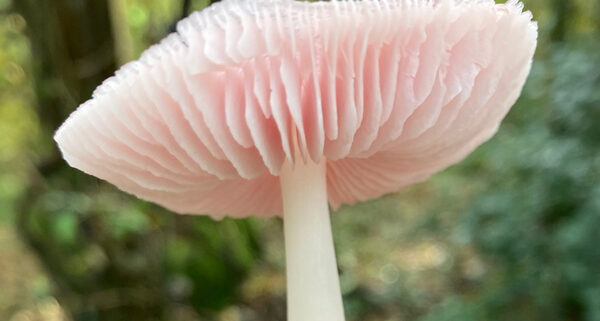
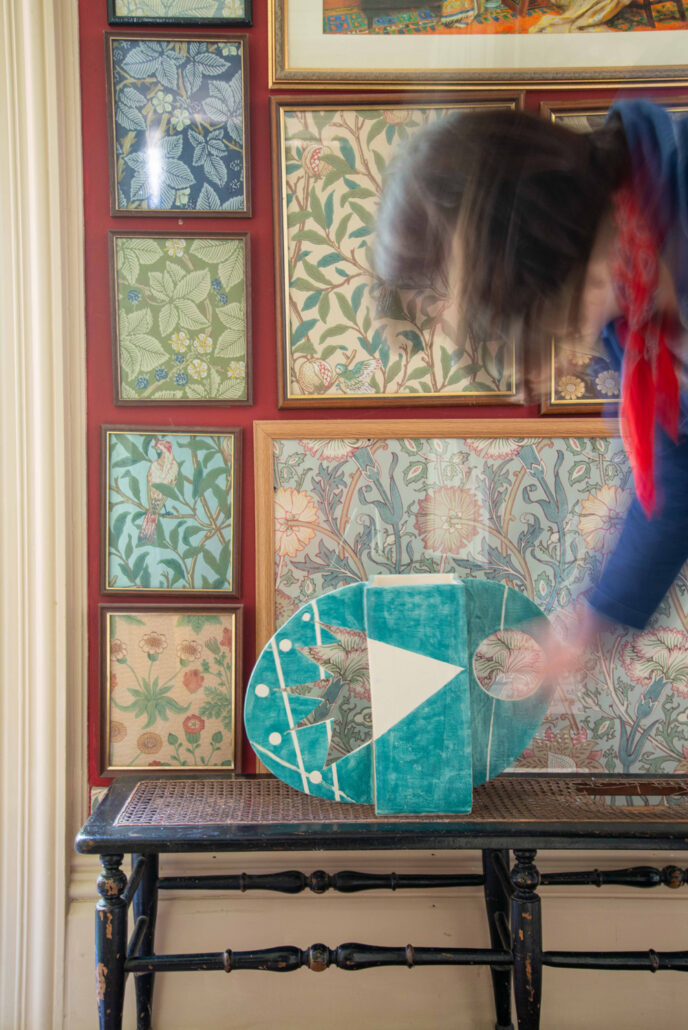



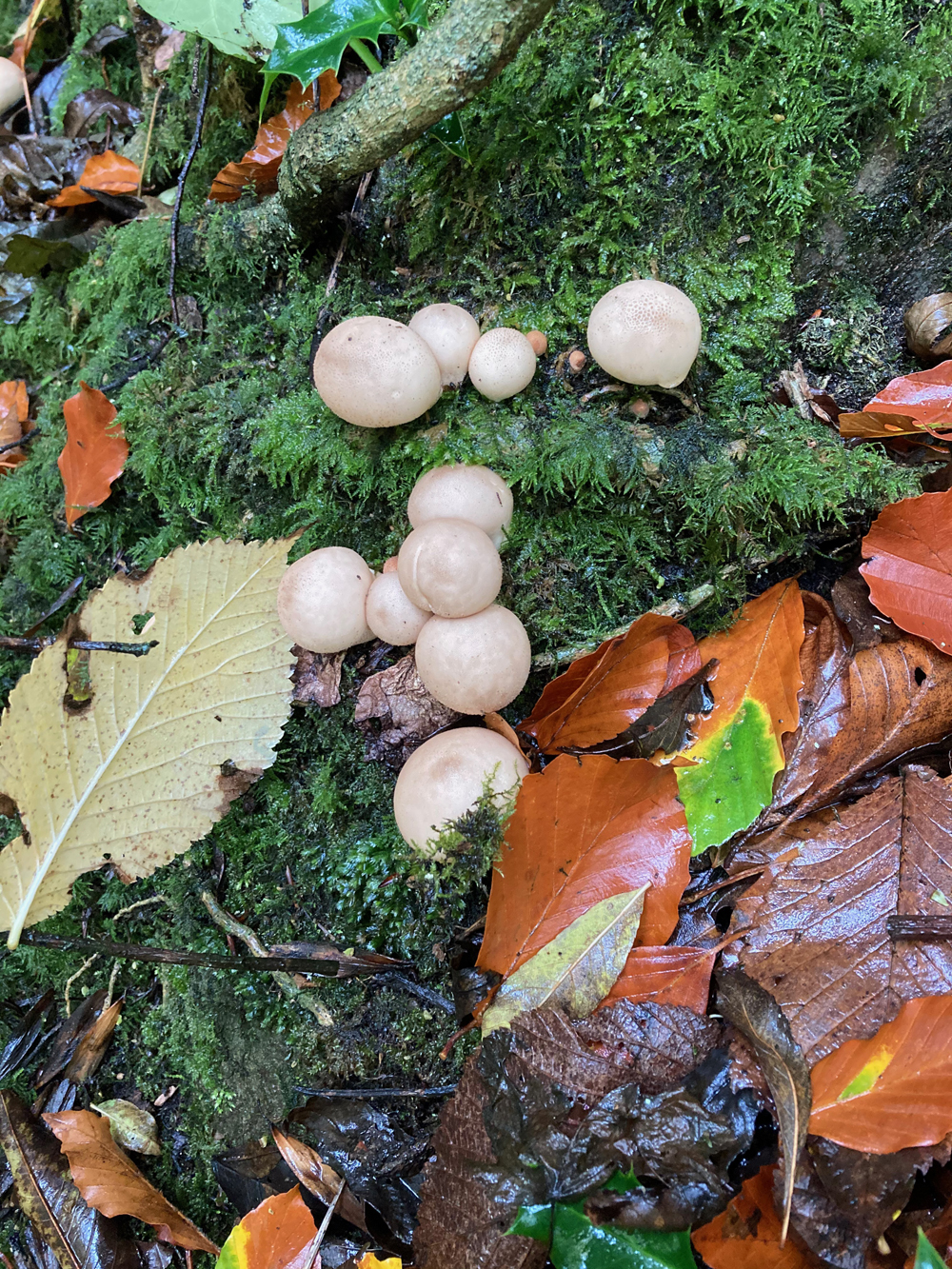


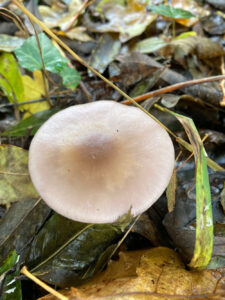



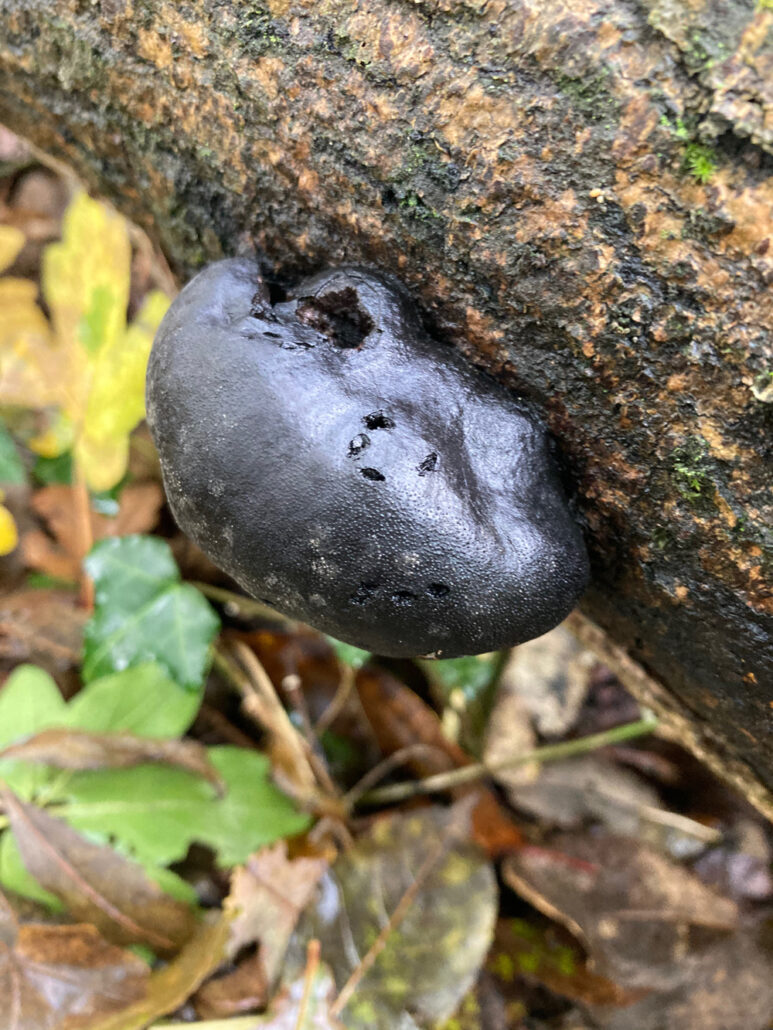
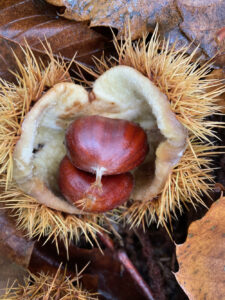
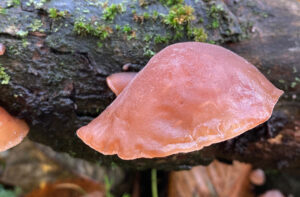
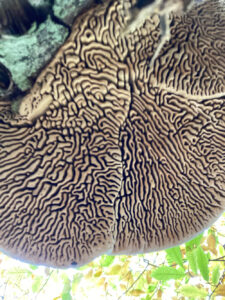
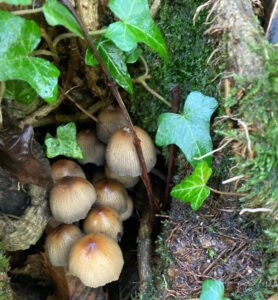
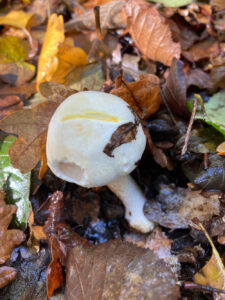









Dear Peter (and Viv) – thanks for all the mushrooms! We have recently had shaggy inkcaps appearing in our garden (on the flank of Frith Wood), only to find them nibbled away before we could pick them. Squirrels, we think.
Jim
It’s bound to be those evil squirrels – I suppose they got to them before you had time to micturate on them (the ink caps, not the squirrels) and make your own ink.
P
There’s a theory out there that Mushroom Is trying to communicate with Mankind to convince us that we’re part of something bigger and not operating in isolation (ie, you’re fucking it up for the rest of us, please get with the programme and become one with the universe). Read Michael Pollan’s How To Change Your Mind – all about hallucinogenics. It’s absolutely fascinating.
Right, I’m getting that book, Stella. It would help their cause if they didn’t exists below knee height, which is why they can’t look at you in the eyes and communicate
.
I have spent time washing my mushrooms with fairy liquid! Hundreds appeared suddenly in my lawn and flower beds and I read this was the way to remove them.. I can report it works!
Sue, so that’s where all the soapsuds were emanating from. I knew there was an explanation for those soap bubbles floating up from Bradlow.